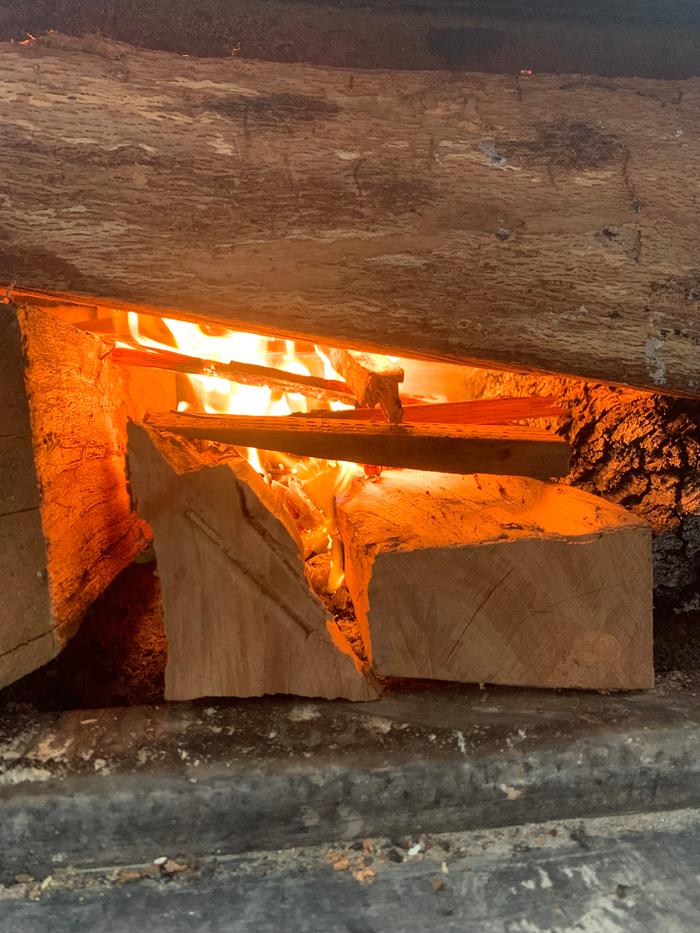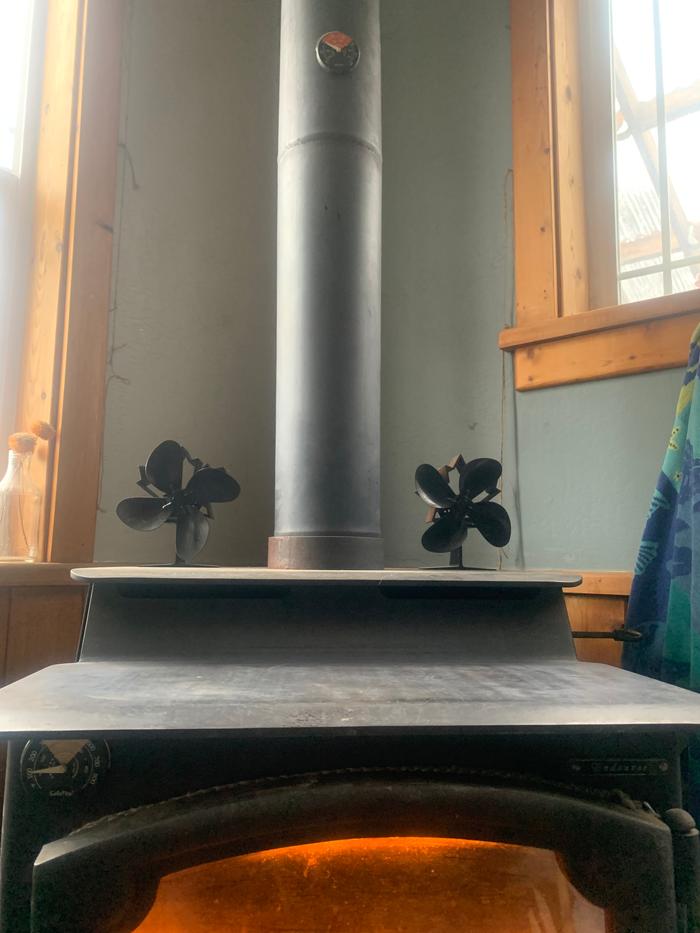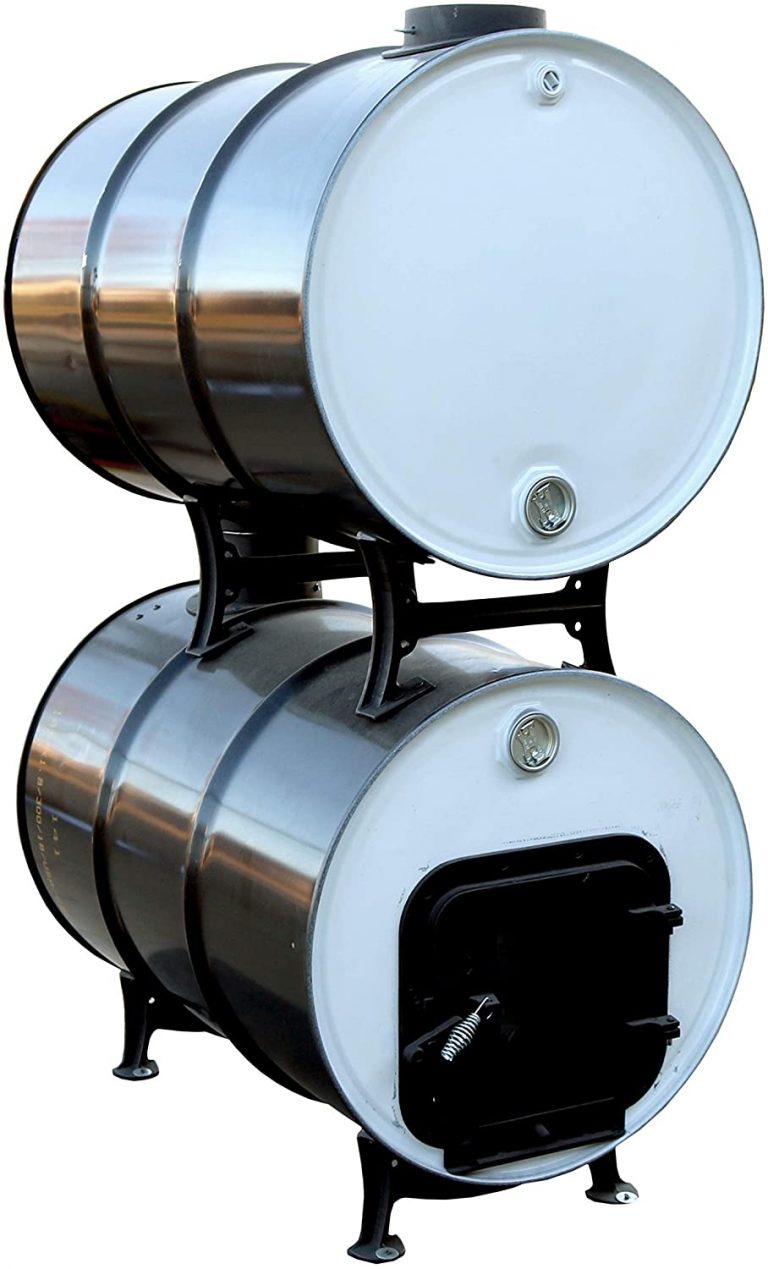
 11
11




The best gardening course: https://gardenmastercourse.com
Permies.com FAQ
 8
8






This is all just my opinion based on a flawed memory

 1
1




Ben Zumeta wrote:
- Build your tinder starter tipi or cabin in the canoe shaped cavity of medium sized pieces, which have larger pieces parallel and outside, with the doorside end perched on the door ledge for airflow. This allows the flame to burn more completely without suffocation caused by larger pieces on top of flame, helping start a draw of air through the chimney. In general, place wood right around the flame, not on top of it for similar reasons.
- To get a bit of a rocket effect, place a wide, flattish piece of wood across the woodstove door side of the top of canoe/cabin of logs. This seems to channel cooler, oxygen rich air into the canoe full of accumulating coals, creating a fire intensifying thermosyphon. It really seems to help get the fire ripping
Ben Zumeta wrote:
- I use thermometers on my wood stove and stove pipe to gauge when I have gotten the stovepipe hot enough to have cooked off any creosote in the stovepipe at 400-450f+, and then I close the recirculator until the stove itself gets above 450f, and then close the intake damper. This has made only an annual stovepipe and stove sweeping necessary, and even that is just a minimal amount of ash.
- Stovetop fans powered by heat seem to help a bit
 4
4




 5
5




 8
8




 2
2




- never operate your 75% efficient wood stove at 3% efficiency
o make sure your stove is well corked before bed
 5
5




paul wheaton wrote:Never go to bed with the dampers open even a little. Never run a fire at night.
To be warm at night, run a very hot fire before bed, surrounded by mass, and when the fire is down, close the dampers completely. The mass around the stove will be warmed by extra heat and will release heat into the room as you sleep. And if the dampers are closed, that heat is not carried outside via the dampers.
 1
1








paul wheaton wrote:Never have firewood touch the outside of the stove. All firewood should be at least a foot away from the stove.




Beau M. Davidson wrote:
paul wheaton wrote:Never go to bed with the dampers open even a little. Never run a fire at night.
To be warm at night, run a very hot fire before bed, surrounded by mass, and when the fire is down, close the dampers completely. The mass around the stove will be warmed by extra heat and will release heat into the room as you sleep. And if the dampers are closed, that heat is not carried outside via the dampers.
Rearticulating the implications.
This is where people mess up. The three pathways:
1) dangerous, but warmish (do not do this - although it is what many people do) - Burn your fire low and slow so you can sleep for a few hours at a chunk before feeding it again.
2) safe, but cold - Wood stove with no thermal mass: shut down your fire before you go to bed and hunker down while the heat escapes, awakening to cold temps.
3) safe and warm - Wood stove with thermal mass: shut down your fire before you go to bed and the house stays warm. The mass captures the heat of the fire while it's burning and releases it slowly overnight.
It could be a three-circled ven diagram of "safe" "warm" and "sleep." It seems that RMH, masonry stoves, and similar with thermal mass are the only wood heat source occupying the convergence of all three circles.
 2
2




Beau M. Davidson wrote:
paul wheaton wrote:Never have firewood touch the outside of the stove. All firewood should be at least a foot away from the stove.
How do you feel about stacking wood on your thermal mass, provided it is 12 inches from all metal?
 2
2




paul wheaton wrote:
- two layers of accordion blinds + window quilt
- bathroom fan pulls warm air out of the house
o reduce or eliminate bathroom fan
- add a small dehumidifier
o if you are going to keep using the bathroom fan
- set up a fan timer and keep the time short
- clothes dryer pulls warm air out of the house
o use drying racks instead
- possibly in combination with a dehymidifier
"the R-2000 standard is a voluntary standard to exceed building code requirements for energy efficiency, indoor air quality, and environmental responsibility." https://en.wikipedia.org/wiki/R-2000_program

 3
3




 Like with most stove systems, these require that a person have some working woodstove knowledge to install and use safely and efficiently.
Like with most stove systems, these require that a person have some working woodstove knowledge to install and use safely and efficiently.
"Never doubt that a small group of thoughtful, committed citizens can change the world; indeed, it's the only thing that ever has."-Margaret Mead "The only thing worse than being blind, is having sight but no vision."-Helen Keller

 1
1




Beau M. Davidson wrote:De-greening fresh firewood.
In my solar kiln I can dry firewood in 6 weeks (summer) instead of two years.
Granted, that is in summer, and folks are usually resorting to burning green wood in winter, but
I am guessing (a wild, uneducated guess) that even in winter the solar kiln will dry much more effectively than stacked outside, especially on the warmer, sunnier days.
I am uncertain whether it will out-pace stacks of wood near your wood stove in your house, but inside real estate comes at a premium in winter.
The kiln: I built it to Virginia Tech's specifications, but added 10x more insulation. It is primarily for kiln drying lumber for the market, but I don't use it very much for that. I have found it much more useful for rapidly seasoning firewood.
I think of it kind of like a wood shed that actively dries.
Another thing about not burning green wood: the heartwood bit.
Heartwood of most species does not retain nearly as much moisture, and will burn much cleaner than the sapwood. I've made some very clean-burning campfires from heartwood in pretty soggy scenarios.

Working toward a permaculture-strong retirement near sunny Sperling.
 7
7




You can follow my latest adventures at
https://www.unclemud.com
https://www.youtube.com/unclemud
https://permies.com/u/164246/Chris-McClellan
Buy my stuff at https://unclemud.com/store/
 4
4




"Ah, but a man's reach should exceed his grasp,
Or what's a heaven for?"
Andrea del Sarto by Robert Browning
 5
5





 2
2




 4
4




paul wheaton wrote:Never go to bed with the dampers open even a little. Never run a fire at night. To be warm at night, run a very hot fire before bed, surrounded by mass, and when the fire is down, close the dampers completely. The mass around the stove will be warmed by extra heat and will release heat into the room as you sleep.
Blazing trails in disabled homesteading
 2
2




Kevin Olson wrote:Hill's version used a cast-in-place refractory firebox and burn tunnel - not far from a J-tube rocket - with both forced and induced draft, and was burned episodically - heat up a thermal store of water (~500 gallons - two recycled fuel oil tanks), then shut down the stove and circulate the hot water through the baseboard heat system (a radiant floor would pair nicely). When the water temp drops, repeat.





 2
2




* Follow your curiosity , Do what you Love *
Permaculture page on Simperi website | Guides for a more intuitive life
 2
2




With blessings, always
 2
2




 2
2




 7
7




 6
6





|
He's dead Jim. Grab his tricorder. I'll get his wallet and this tiny ad:
Learn Permaculture through a little hard work
https://wheaton-labs.com/bootcamp
|






